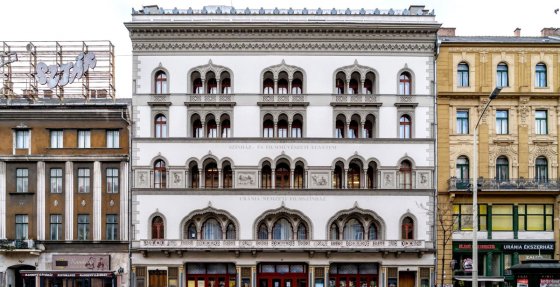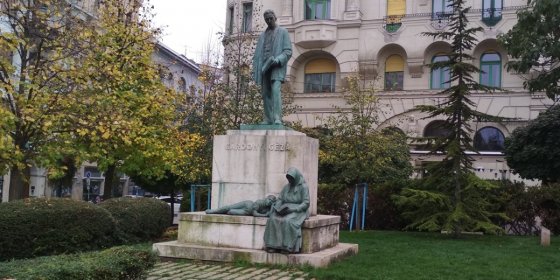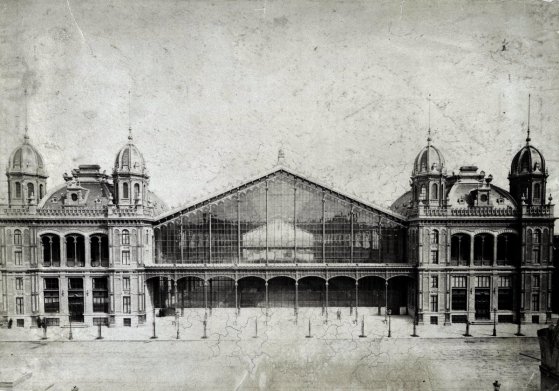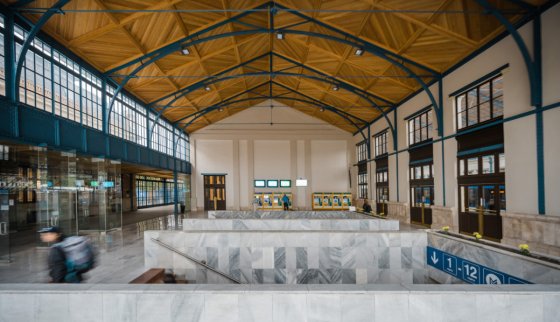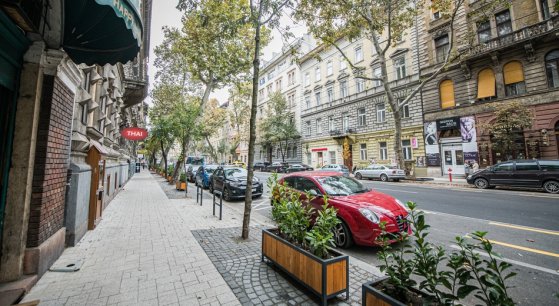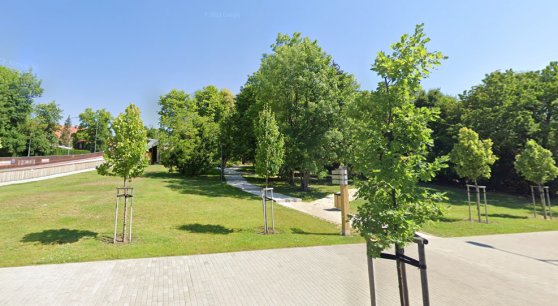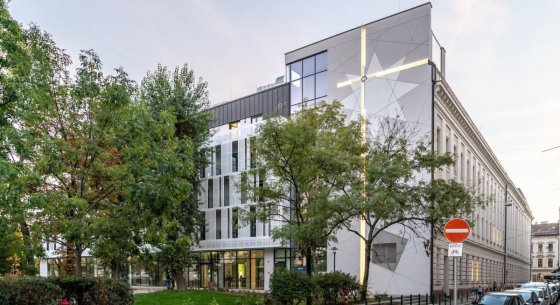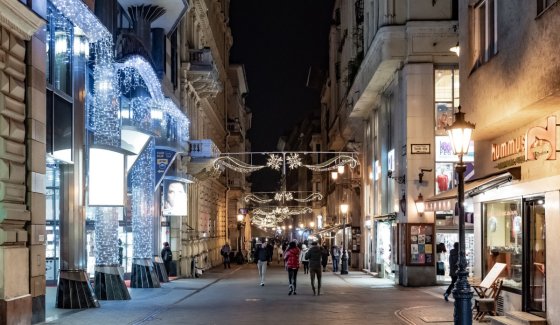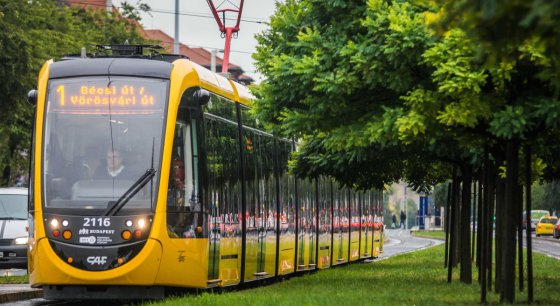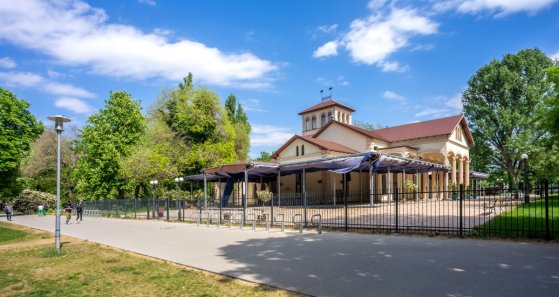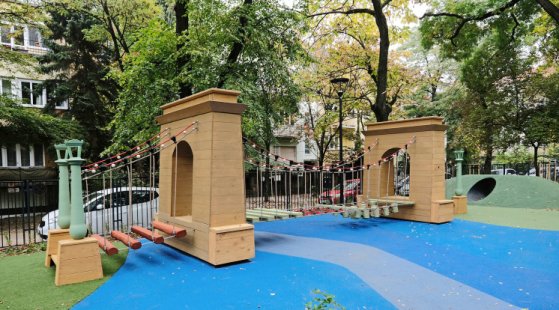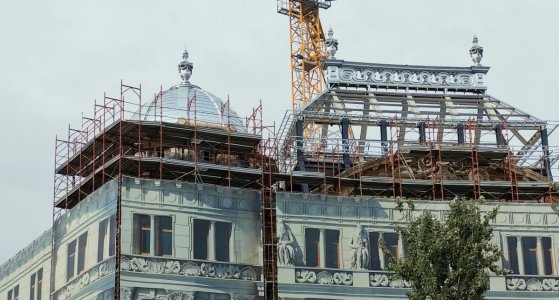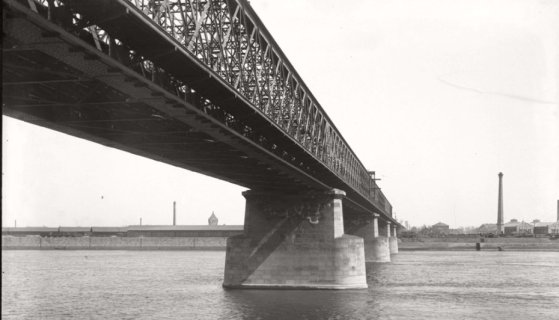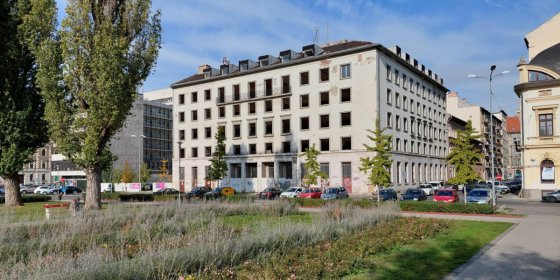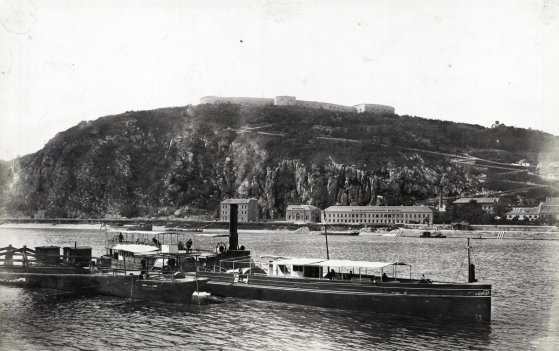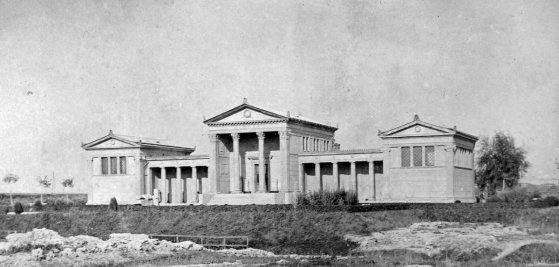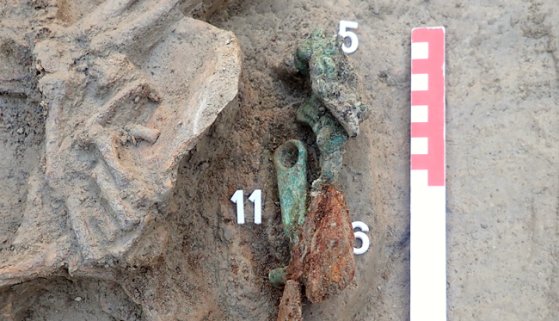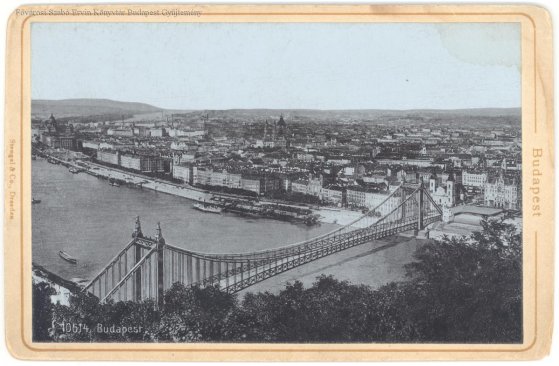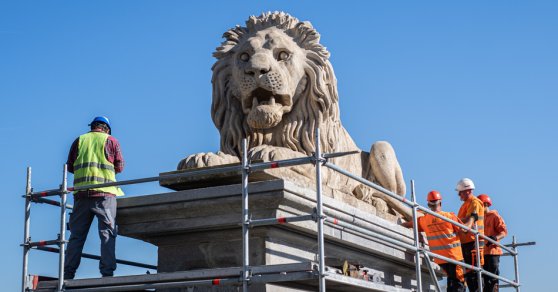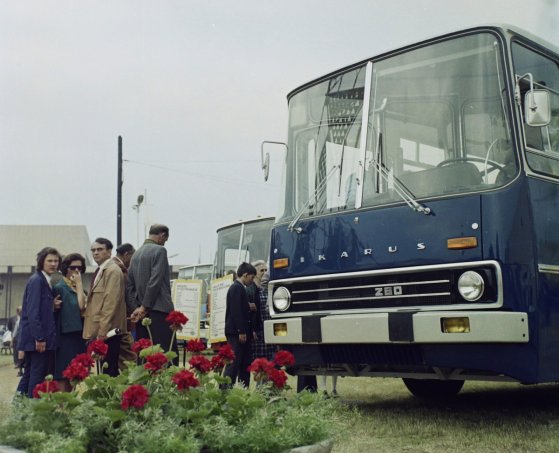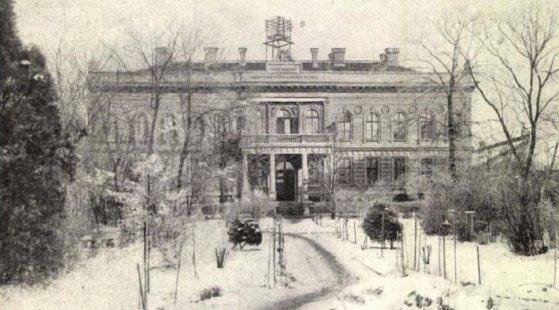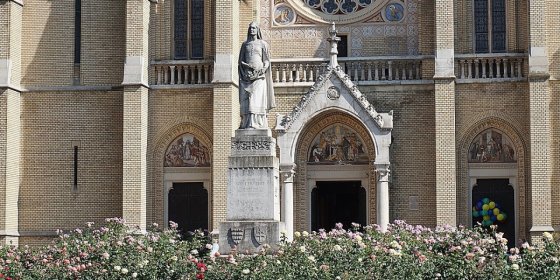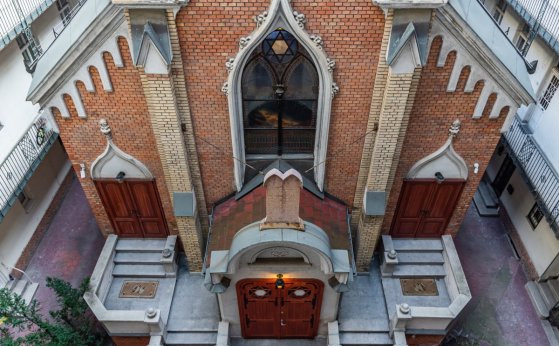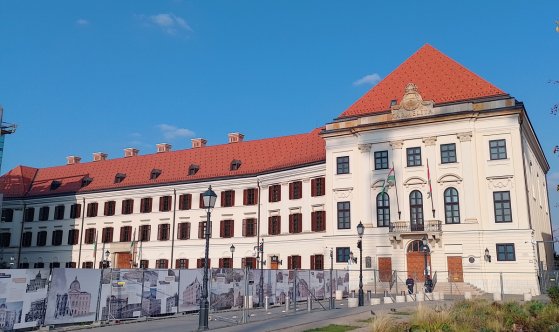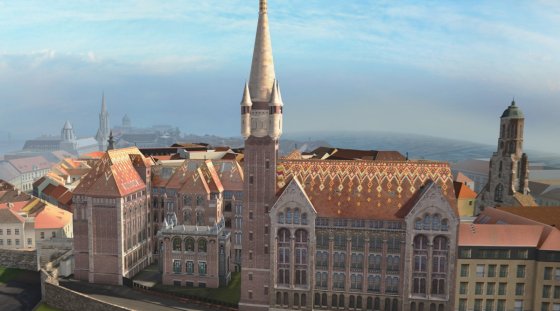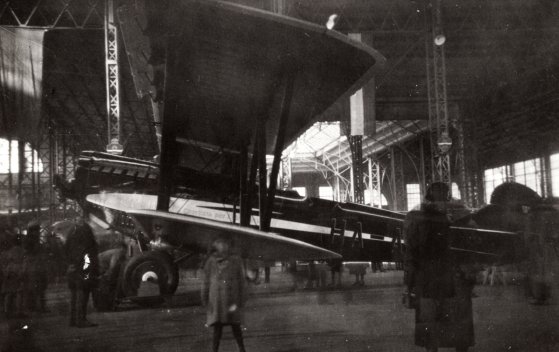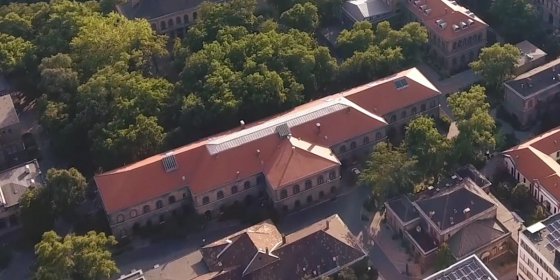 The „intertwined history” of the bridges and the city of Budapest
Which ideas and events have shaped the fate of bridges of Budapest and the cityscape? Alongside many other interesting facts, this question is also answered this newly published book by the Budapest City Archives, which introduces the history of bridges in Budapest.
The „intertwined history” of the bridges and the city of Budapest
Which ideas and events have shaped the fate of bridges of Budapest and the cityscape? Alongside many other interesting facts, this question is also answered this newly published book by the Budapest City Archives, which introduces the history of bridges in Budapest.
Budapest
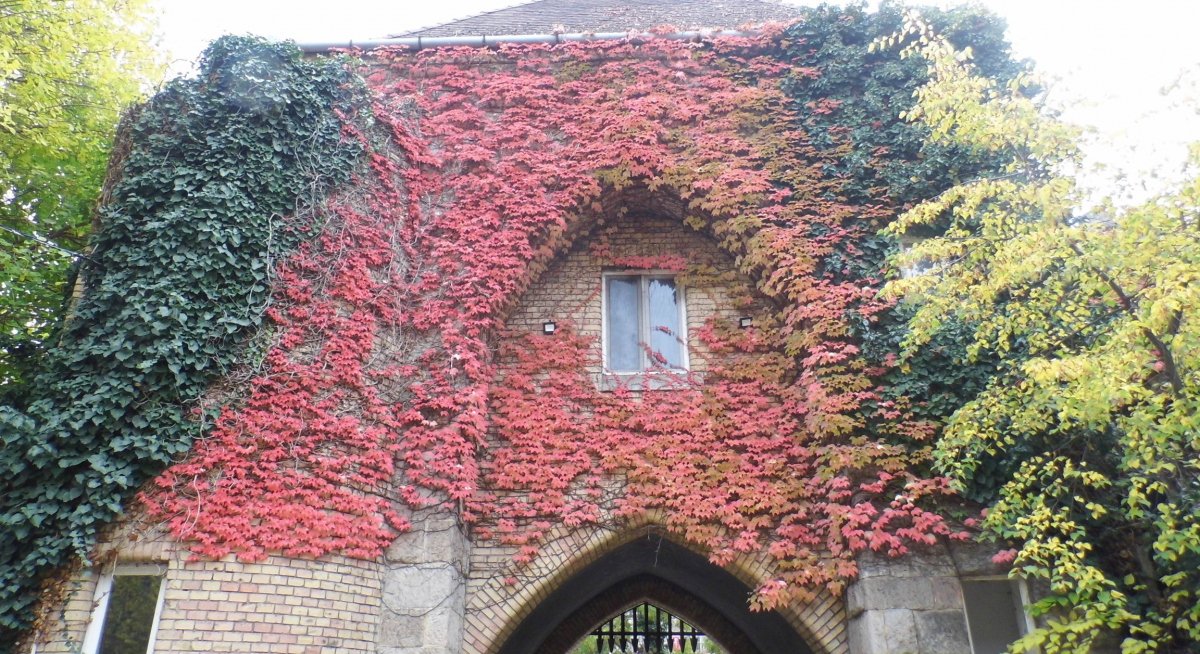 Art Nouveau on tombstones - An attempt to renew cemetery art
Art Nouveau on tombstones - An attempt to renew cemetery art
November 2, 2022 at 10:00 AM
Around the Day of the Dead, many of us visit the graves of our loved ones, and at this time we can discover that the cemetery is also a repository of real works of art. At the beginning of the 20th century, Art Nouveau, which broke with classical forms, permeated this area as well, and artists tried to offer new solutions to those who ordered tombstones. One of the most enthusiastic of them was the sculptor Richárd Füredi, who together with two of his colleagues organised an exhibition to introduce his works reflecting the new taste to the general public.
Candle lighting at the graves of our national greats in the Fiumei Road Cemetery
October 31, 2022 at 5:00 PM
In the Fiumei Road Cemetery, on 1 November, candles are provided for all those who wish to remember our national greats who rest in the cemetery. Visitors can also participate in a celebratory mass.
All rooms of Uránia can be visited again
October 30, 2022 at 7:00 PM
After an absence of nearly seven years, the two basement rooms of the Uránia National Film Theatre, which are located below the Main Hall, reopened this month. The Fábri and Csortos screening rooms had to be closed in 2015 due to water damage.
The hermit of Eger was a regular guest of Pest's coffee houses - Géza Gárdonyi died a hundred years ago
October 30, 2022 at 10:00 AM
Although his name lives on in the public consciousness as a hermit of Eger, Géza Gárdonyi was a regular figure in the cultural and literary life of Budapest at the turn of the 19th century. He was an eyewitness to the development of the city, as a journalist he reported for years from the Old House of Representatives, he visited the famous artist's salon of the Fesztys, but he was also considered a regular guest at the Centrál, the Valéria or the New York Café. Pestbuda now remembers Géza Gárdonyi, who died 100 years ago today.
The railway station that was cut in two
October 29, 2022 at 11:00 AM
By the beginning of the 1870s, the first railway station in Pest - the predecessor of Nyugati (Western), then known as Pest Station Building - was no longer able to handle the ever-increasing railway traffic smoothly. The owner railway company started the expansion, but then it turned out that the building stood in the way of the planned Outer Ring Road. Therefore, the old hall was "halved" and a new railway station was built over its northern part. The Nyugati Railway Station, as it is known today, was handed over on 28 October 1877, i.e., 145 years ago.
The Marble Hall in Nyugati was handed over, a significant part of the roof was completed
October 28, 2022 at 8:30 PM
The renovation of the roof structure of the 145-year-old Nyugati (Western) Railway Station began in the spring of 2020 and the reconstruction of important parts of the building complex has now been completed. The roof is completed over the Marble Hall, the international waiting room, the former ABC, the Cegléd Corridor and the office wing facing Nyugati Square. In addition, passengers can now use the renovated Marble Hall and the Cegléd Corridor.
Trees, plants, street furniture: Podmaniczky Street within the Outer Ring Road has been renewed
October 28, 2022 at 7:30 PM
The section of Podmaniczky Street in the 6th District between Teréz Boulevard and Bajcsy-Zsilinszky Road was renovated: the sidewalk became wider, new trees were planted, and a new traffic light intersection with three pedestrian crossings was established at Jókai Street. Bicycle lanes were created in both directions, there are fewer parking spaces and more vegetation.
Several public areas will be renamed in the capital
October 28, 2022 at 2:00 PM
In the 14th District, a park is named after Eszter Pécsi, the first Hungarian female architect, and Margit Slachta, the first Hungarian female parliamentarian. A section of Eötvös Road in the 12th District will become the Kopp Mária Promenade.
Light permeates the reborn Ráday House
October 28, 2022 at 9:00 AM
Large-scale construction had been going on in Ráday Street, and especially Markusovszky Square, in recent years, the veil has recently been lifted: the new building of the Ráday Dormitory, which burned down in early 2019, has been completed. The works also included the renovation of the original centre, so an entire block of buildings was reborn in the heart of Ferencváros. Old and new blend together harmoniously, perfectly expressing the Christian values prevailing between the walls.
There will be no decorative lighting for Christmas in the capital
October 27, 2022 at 8:30 PM
According to the decision of the General Assembly of Budapest, there will be no decorative Christmas lighting in streets managed by the capital, for example, Váci Street, Városháza Park, part of Andrássy Avenue and Batthyány Square.
Budapest to buy new low-floor, air-conditioned trams
October 27, 2022 at 9:30 AM
Another twenty new CAF-type trams may enter service in Budapest in 2024. The General Assembly of Budapest decided on the purchase of the trams on Wednesday.
The capital imposed building tax on properties on Margit Island
October 26, 2022 at 7:30 PM
From 1 January, building tax must be paid on privately owned properties on Margit Island worth more than one billion HUF - this was decided by the General Assembly of Budapest on Wednesday. Budapest's leadership is encouraging the districts to follow the capital's example and impose a building tax on privately owned apartments worth more than one billion HUF.
A Reform-era playground was built in the 12th District - Children can learn about the city's past
October 26, 2022 at 12:30 PM
Playground equipment based on the Chain Bridge, the Buda Castle Tunnel, the Cogwheel Railway and the Kisfaludy Steamboat will also appear at the completely renovated Hollósy Simon Street playground in the 12th District. The 19th-century past of the Hegyvidék and the capital, especially during the Reformation period, is recalled by the special structures, as well as by the tableaus on which pictures, descriptions and QR codes depicting the era are placed.
The domes of the Adria Palace are already in place
October 25, 2022 at 2:00 PM
The restored domes of the former headquarters of Adria Royal Hungarian Sea Navigation Company on Szabadság Square can already be seen. The facade and roof ornaments of the palace, designed by Arthur Meinig are being renovated based on archival photos.
Trains have been able to cross between Pest and Buda for 145 years
October 24, 2022 at 12:30 PM
The most important Hungarian railway bridge was handed over on 23 October 1877 on the southern border of Budapest at the time. It served railway traffic for only 36 years. The construction of the original structure was accompanied by many disputes, and several lawsuits were started after the investment was completed.
The Party Office on the former Köztársaság Square does not allow the past to be sealed off
October 22, 2022 at 9:00 AM
Although the party office with a dark past has been continuously deteriorating for years in the former Köztársaság, today's II. János Pál pápa Square, it has not yet been possible to demolish or rebuild it. Moreover, its immediate surroundings were recently declared life-threatening and closed, so instead of being converted into a residential building as planned, the socialist realism style building continues to remind us of the bloody events of the 20th century and the 1956 revolution.
Budapest acquired two hated buildings 125 years ago
October 21, 2022 at 10:00 AM
Several well-known symbols of oppression of Hungary and Budapest stood in the centre of the capital even in the decades after the Austro-Hungarian Compromise. One is the Citadella fortress built to intimidate the city after the defeat of the War of Independence on top of Gellért Hill, and the other is the huge New Building, also known as the prison of soldiers of the 1848 national army, with a bad memory, on the site of today's Szabadság Square. Budapest acquired these two military facilities in October 1897. The New Building was demolished in a short time, but they could not do anything with the Citadella for decades.
They collected memories of old times - Budapest founded a museum 135 years ago
October 20, 2022 at 3:00 PM
Budapest's position as the capital provides many advantages but sometimes it also comes with disadvantages. This was also the case in the area of museums: because the Hungarian National Museum was established here in 1807, the capital was able to establish its own institution only eighty years later - after many rural settlements. However, on 20 October 1887 - exactly 135 years ago - the decision was finally made and the Capital Museum was established.
Archaeologists have found a previously unknown site at the border of Csillaghegy
October 20, 2022 at 12:30 PM
Archaeologists came across special finds in the 3rd District, in Pünkösdfürdő Street: prehistoric-, Roman-, migration- and Avar-era monuments were found in the same place. A 6th-7th-century grave was found here, in which the buried woman had a string of glass beads around her neck, a bronze ring on her temple, and a bronze ring on her right hand. Other valuable objects of use were also found on the site from several periods.
Are we overusing Margit Island? - The capital would reduce the number of visitors
October 19, 2022 at 7:00 PM
Margit Island is currently overused and needs to be quieted down, believes the Budapest City Council, which wants to strengthen the recreational park character of the much-loved part of Budapest. They want to achieve quietness by amending legislation: the capital decree on the use of public spaces is planned to be changed in such a way that fewer people can use the services provided on the island.
Frigyes Podmaniczky, who managed the development of Budapest, died 115 years ago
October 19, 2022 at 12:30 PM
He was one of the most important figures in the history of Budapest, who devoted all his energy to the development of the capital. Baron Frigyes Podmaniczky managed the Public Works Council for more than thirty years, essentially everything that we now consider Budapest's architectural and cultural heritage was built during his time. He played a decisive role not only in the development of the city but also in the theatre world. Perhaps the most popular person in Budapest, who worked for the city until his death, died 115 years ago.
Stone lions returned to the Buda bridgehead of the Chain Bridge
October 18, 2022 at 2:00 PM
The lions decorating the Buda bridgehead of the Chain Bridge have been beautified and returned. The four sculptures made by János Marschalkó were transported to a restorer's workshop last August, in connection with the renovation works of the Chain Bridge, from which two have now returned cleaned and repaired. Their final fixation takes several weeks. Citizens have to wait a few more weeks for the lions of the Pest bridgehead.
Farewell to the Ikarus 200 – They defined the streetscape of Budapest for 50 years
October 18, 2022 at 9:00 AM
Budapest will soon say goodbye to a legend that defined the image of the city for decades. BKV is preparing to withdraw the last pieces of a bus family that was perhaps the most important bus type in the world at one time. The Ikarus 200s are leaving after fifty years.
An exhibition was opened on the 150th anniversary of the construction of the Honvédmenház
October 17, 2022 at 7:30 PM
150 years ago, in the fall of 1872, on Soroksári Road in the 9th District, the nursing home built for the elderly disabled and destitute soldiers who took part in the 1848-49 revolution and war of independence was opened. Its task was to provide and care for veteran soldiers. The last veteran died in the building, designed by Ödön Lechner and Gyula Pártos, in 1928. An exhibition about the regiment of Lajos Kossuth has just opened in the Ferencváros Local History Collection.
Sculptor József Damkó was born 150 years ago - His works can be admired all over the capital
October 17, 2022 at 2:00 PM
Undeservedly little is said about sculptor József Damkó, even though the artist produced many works that stand at important points in the Hungarian capital. Such is the statue of Saint Elizabeth of the House of Árpád on Rózsák Square, the statue of St. John of Capistrano on Kapisztrán Square in Buda Castle or the statue of Pope Innocent XI on Hess András Square. His architectural sculptures and tombstones are also of considerable value. Pestbuda now presents the Budapest works of József Damkó on the 150th anniversary of his birth.
The foundation stone of the synagogue in Újlak was laid 135 years ago
October 16, 2022 at 2:00 PM
When the synagogue on Frankel Leó Road - then Zsigmond Street - was built, it was referred to as the Jewish church in Újlak. Its designer was Sándor Fellner, the creator of the Ministry of Finance in Buda Castle. The synagogue in the 2nd District is no longer seen as it was at the time of its construction since it has since been surrounded by a residential building.
The church and monastery were turned into a place of entertainment - the Castle Theatre opened 235 years ago
October 16, 2022 at 9:00 AM
One of the characteristic buildings of the Buda Castle is the Carmelite monastery, which has been used by the Prime Minister's Office for almost four years. The eponymous order of monks was actually forced to withdraw from the walls a long time ago, precisely 235 years ago, their church was turned into Castle Theatre. The ruthless intervention also greatly affected the building itself, but it was mostly then that the image that is known today was formed.
The renovation and expansion of the Hungarian National Archives are delayed
October 15, 2022 at 5:00 PM
The public procurement call for the construction of the headquarters of the Hungarian National Archives has been withdrawn, so it is not yet known when the renovation of the Bécsi Kapu Square building, the appropriate expansion of Samu Pecz's original plans and the rebuilding of its iconic tower, which was demolished after the war, can begin.
Miracle aeroplanes in the Industrial Hall - The pilot of the Justice for Hungary plane crossed the ocean but crashed in Rome
October 15, 2022 at 11:00 AM
Those who bought tickets to the György Endresz Aviation Exhibition 90 years ago were able to get an insight into the real world of aviation, because not only could they see the planes on the ground, but the lucky ones could also win flights. The exhibition, which opened on 15 October 1932, also commemorated the unfortunate Hungarian transatlantic pilot, György Endresz.
The renovation of the Neo-Renaissance building complex of the University of Veterinary Medicine begins
October 14, 2022 at 7:00 PM
The development of the István Street campus of the University of Veterinary Medicine will begin soon. Several of the buildings on the campus, designed by Imre Steindl, will be renovated. Buildings with a patina are modernised, and their interiors and facades are renovated while preserving historic values.
More articles
 The „intertwined history” of the bridges and the city of Budapest
Which ideas and events have shaped the fate of bridges of Budapest and the cityscape? Alongside many other interesting facts, this question is also answered this newly published book by the Budapest City Archives, which introduces the history of bridges in Budapest.
The „intertwined history” of the bridges and the city of Budapest
Which ideas and events have shaped the fate of bridges of Budapest and the cityscape? Alongside many other interesting facts, this question is also answered this newly published book by the Budapest City Archives, which introduces the history of bridges in Budapest.
 The Bridge Report, which brought a turning point in the history of Budapest
A travel report that changed the history of Pest and Buda, as well as Hungary. The little book contributed to the change of half a thousand years of legal customs and the implementation of an investment of unprecedented size and technical quality. This book was The Bridge Report [Hídjelentés in Hungarian].
The Bridge Report, which brought a turning point in the history of Budapest
A travel report that changed the history of Pest and Buda, as well as Hungary. The little book contributed to the change of half a thousand years of legal customs and the implementation of an investment of unprecedented size and technical quality. This book was The Bridge Report [Hídjelentés in Hungarian].
 Drama on the university wall - The heroic monument was planned 95 years ago
In the constant hustle and bustle of the Egyetem Square in Pest, the students may not even notice the monument that decorates the short section of wall between the church and the central building of ELTE. However, it commemorates their predecessors, the heroes who fought for their country in World War I, and those who heroically helped them. The first design of the dramatically collapsing soldier was born in 1928, ninety-five years ago.
Drama on the university wall - The heroic monument was planned 95 years ago
In the constant hustle and bustle of the Egyetem Square in Pest, the students may not even notice the monument that decorates the short section of wall between the church and the central building of ELTE. However, it commemorates their predecessors, the heroes who fought for their country in World War I, and those who heroically helped them. The first design of the dramatically collapsing soldier was born in 1928, ninety-five years ago.


